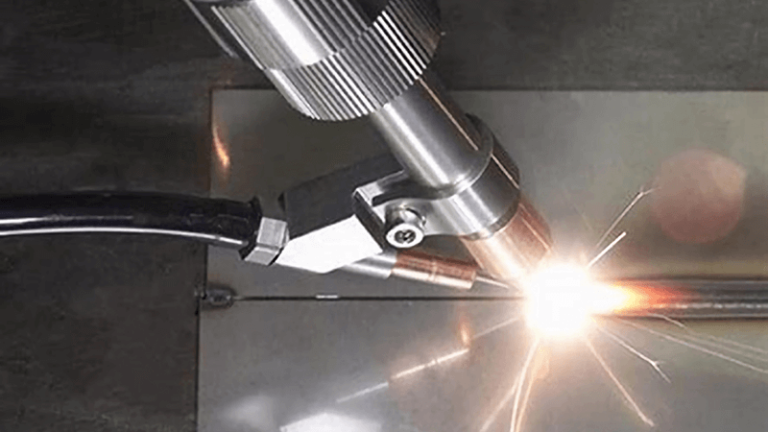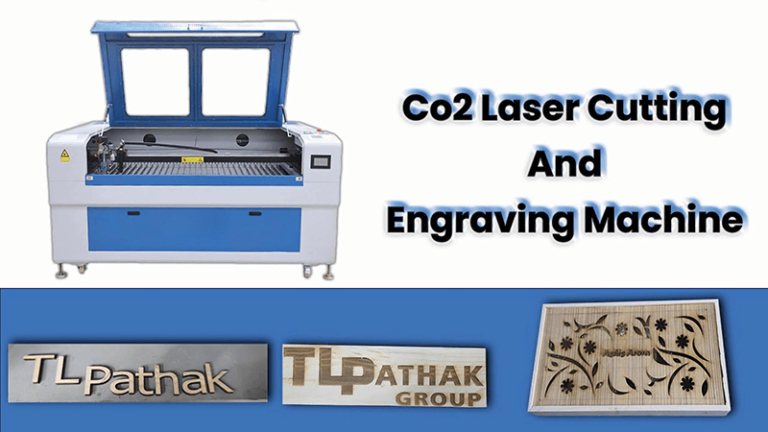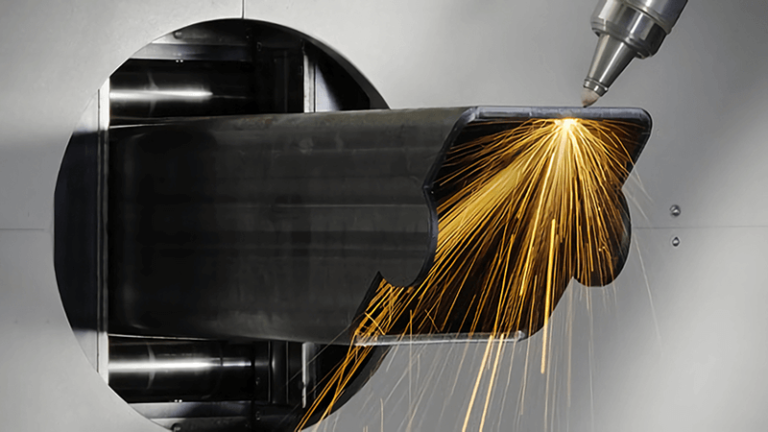Laser cleaning machines, particularly CW (continuous wave) models, have gained significant attention in recent years. They offer an efficient and eco-friendly alternative to traditional cleaning methods. If you are considering upgrading your cleaning process, a CW laser cleaning machine could be the solution to improve efficiency and product quality.
CW laser cleaning machines are becoming increasingly popular for industrial cleaning due to their precision, speed, and environmental benefits. With different power options, such as 1.5kW, 2kW, and 3kW fiber lasers, these machines provide highly effective cleaning for a variety of applications.
If you're wondering how exactly these machines work, or which industries could benefit the most from them, you’re in the right place. This guide dives into everything you need to know about CW laser cleaning machines, from their capabilities to their safety features.

What is CW Laser Cleaning Machine?
CW laser cleaning machines use a continuous wave of laser light1 to remove contaminants from surfaces. These machines offer high precision, efficiency, and versatility for cleaning a variety of materials. But what exactly makes them so effective, and how do they differ from traditional cleaning methods?
A CW laser cleaning machine operates by emitting a continuous laser beam that interacts with the surface to remove rust, paint, oil, or other contaminants. The process is non-abrasive, and the laser beam does not damage the underlying material.
CW laser cleaning machines operate on the principle of laser ablation2, where the high-energy light is absorbed by contaminants, causing them to evaporate or be blown away by the pressure generated. These machines are typically equipped with fiber lasers3, which provide high-quality, stable beams and are highly efficient in cleaning a range of materials.
How CW Laser Cleaning Works
A CW laser cleaning machine typically uses a fiber laser with varying power options like 1.5kW, 2kW, or 3kW to generate a continuous wave of laser light. The laser beam is focused onto the surface of the material, where it interacts with dirt, rust, or coatings, breaking the bond between the contaminants and the substrate. The result is a clean surface without damaging the underlying material.
| Laser Power | Material Type | Cleaning Efficiency | Common Application |
|---|---|---|---|
| 1.5 kW | Light rust, oils | High | Small components, automotive parts |
| 2 kW | Moderate rust, coatings | Very High | Manufacturing, large metal surfaces |
| 3 kW | Heavy rust, complex coatings | Maximum | Heavy industries, large machinery |
Advantages of CW Laser Cleaning
- Non-abrasive: Unlike mechanical cleaning methods, CW laser cleaning does not cause wear or damage to the material being cleaned.
- Minimal Environmental Impact: There are no chemicals or abrasive materials involved, making laser cleaning an eco-friendly option.
- Precision: The ability to precisely control the power and focus of the laser allows for highly targeted cleaning, even on delicate surfaces.
- Versatility: CW laser cleaning can be used on a wide range of materials, from metals to ceramics, plastics, and more.
With their ability to clean effectively without causing damage, CW laser cleaning machines have become invaluable tools in many industries. But which industries benefit the most from using this technology?

What industries benefit the most from using a CW laser cleaning machine?
Many industries are turning to CW laser cleaning machines for their precision and efficiency. From automotive4 to aerospace5, these machines are providing significant benefits by improving cleaning processes and reducing costs. But which industries see the most value?
Industries such as aerospace, automotive, and manufacturing benefit greatly from CW laser cleaning machines. These machines provide a faster, more effective way to remove contaminants, improving efficiency and product quality in these sectors.
CW laser cleaning machines are a powerful tool for various industries, especially where precision cleaning is critical. The flexibility of CW lasers makes them suitable for different applications, such as rust removal, paint stripping, and surface preparation. Let's take a closer look at the industries that gain the most from this technology.
Aerospace Industry
In the aerospace industry, maintaining clean surfaces is vital for ensuring the integrity and performance of components. Rust, oil, and other contaminants can compromise the quality of parts, leading to safety issues or product failures. CW laser cleaning machines are perfect for removing these contaminants without damaging the delicate components or creating waste.
| Component Type | Cleaning Requirement | Laser Power | Application |
|---|---|---|---|
| Turbine Blades | Removal of oxidation | 2-3 kW | Aerospace, high-precision |
| Aircraft Parts | Rust and paint removal | 1.5-2 kW | Surface preparation |
Automotive Industry
Automotive manufacturers use CW laser cleaning machines for a range of tasks, such as removing rust from body parts, cleaning weld seams, and preparing surfaces for painting. The non-contact nature of the process prevents the need for abrasive cleaning tools that might cause scratches or damage to the parts.
| Component Type | Cleaning Challenge | Laser Power | Common Use Case |
|---|---|---|---|
| Car Body Parts | Rust, paint, coatings | 2-3 kW | Pre-paint cleaning |
| Weld Seams | Oxidation, contaminants | 1.5-2 kW | Quality control |
Manufacturing and Heavy Industry
CW laser cleaning machines are also used in heavy industries like manufacturing, where rust, grease, and coatings often need to be removed from large machinery and equipment. These machines can clean large surfaces quickly and effectively, improving maintenance routines and reducing downtime.
| Equipment Type | Cleaning Challenge | Laser Power | Application Area |
|---|---|---|---|
| Industrial Machines | Heavy grease, coatings | 3 kW | Machinery maintenance |
| Large Structures | Rust, old paint | 2-3 kW | Surface treatment |
In all these industries, CW laser cleaning machines provide significant advantages by offering a cleaner, more efficient, and environmentally friendly alternative to traditional cleaning methods.
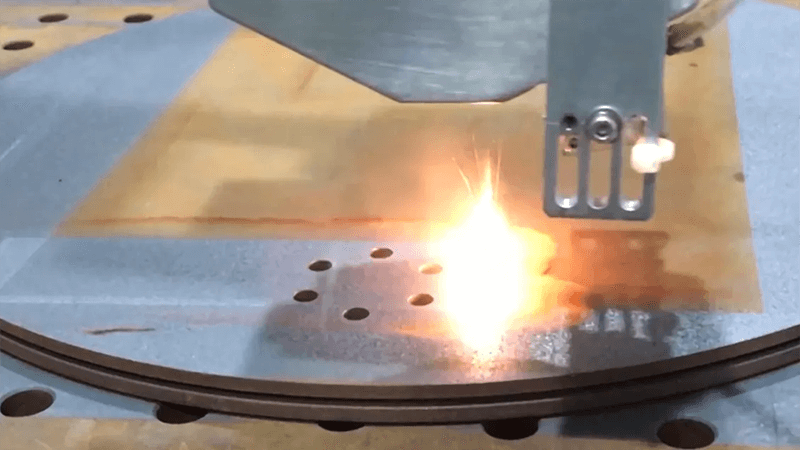
How does the CW Laser Cleaning Machine compare to traditional chemical cleaning methods?
Chemical cleaning methods have been a standard in many industries for years. However, CW laser cleaning machines6 offer a more eco-friendly and efficient alternative. But how do they stack up against traditional chemical-based solutions?
Unlike chemical cleaning, CW laser cleaning machines do not require harmful substances. They eliminate contaminants through a physical process rather than using chemicals, making them a safer and more sustainable option for many industries.
When comparing CW laser cleaning machines to traditional chemical cleaning methods, there are several key differences to consider. Chemical cleaning methods often involve harsh substances that can be harmful to both the environment and the operators. In contrast, CW laser cleaning is a dry, non-toxic process that does not require any chemicals, reducing environmental and health risks.
Environmental Impact
Chemical cleaning methods often involve toxic substances that can be harmful to the environment. These chemicals may need to be disposed of properly, leading to additional costs and regulatory concerns. CW laser cleaning7, however, generates no hazardous waste, making it a more environmentally responsible option.
| Cleaning Method | Environmental Impact | Waste Generation | Safety Risks |
|---|---|---|---|
| CW Laser Cleaning | Low, eco-friendly | None | Low |
| Chemical Cleaning | High, requires disposal of chemicals | High | High |
Efficiency and Speed
CW laser cleaning machines are faster than many chemical cleaning methods, which can take longer and involve multiple stages, such as applying the chemical, allowing it to sit, and then rinsing. With laser cleaning, the entire process is completed quickly and without the need for additional steps.
| Process | Chemical Cleaning Time | Laser Cleaning Time | Speed Advantage |
|---|---|---|---|
| Surface Preparation | 20-60 minutes | 5-15 minutes | 4-12x faster |
| Rust Removal | 30-90 minutes | 10-20 minutes | 3-9x faster |
Surface Integrity
Chemical cleaners can sometimes be too abrasive for delicate surfaces, potentially leading to damage or degradation. CW laser cleaning machines, on the other hand, are non-abrasive and can be controlled to ensure that only the contaminants are removed, leaving the underlying surface intact.
| Cleaning Method | Surface Protection | Suitable for Delicate Surfaces | Additional Handling Needed |
|---|---|---|---|
| CW Laser Cleaning | Non-abrasive | Yes | Minimal |
| Chemical Cleaning | Can be abrasive | No | High |
Overall, CW laser cleaning offers several advantages over traditional chemical cleaning methods, including faster operation, fewer environmental concerns, and a safer cleaning process.

Can CW Laser Cleaning Machines be used for delicate or sensitive surfaces?
One of the main advantages of CW laser cleaning machines is their versatility. But can they be used on delicate or sensitive surfaces8, or is their power too intense? Let’s explore how CW lasers handle these materials.
CW laser cleaning machines can be adjusted to different power levels, making them suitable for delicate and sensitive surfaces. By controlling the intensity and focusing the beam, these machines can clean without causing any damage to sensitive materials.
CW laser cleaning machines are highly versatile and can be adjusted for use on a wide range of materials, including delicate or sensitive surfaces. Their ability to control laser power and focus ensures that only the contaminants are removed, without causing any harm to the surface being cleaned.
Cleaning Delicate Metals
For industries working with sensitive metals, such as aerospace and electronics, CW laser cleaning machines can be set to lower power levels to remove rust or oxidation without affecting the integrity of the metal. This makes laser cleaning ideal for cleaning delicate parts like circuit boards9, turbine blades10, and other precision components.
| Metal Type | Cleaning Requirement | Power Setting | Application Area |
|---|---|---|---|
| Aluminum | Oxidation removal | 1.5-2 kW | Aerospace, electronics |
| Titanium | Rust removal, surface prep | 1.5-2 kW | Medical, aerospace |
Non-Metallic Surfaces
CW laser cleaning machines can also be used on non-metallic surfaces, such as plastics and ceramics. The ability to control the laser's energy ensures that these materials can be cleaned without melting or deforming. This makes laser cleaning a safe option for a variety of delicate items.
| Material Type | Cleaning Challenge | Laser Power | Suitable Application |
|---|---|---|---|
| Plastics | Paint, glue, contaminants | 1.5 kW | Consumer goods, electronics |
| Ceramics | Surface preparation | 1.5-2 kW | Artifacts, electronics |
Overall, the versatility of CW laser cleaning machines allows them to clean even the most delicate surfaces, offering a precise and non-damaging solution for industries that work with sensitive materials.

What maintenance is required for a CW laser cleaning machine?
While CW laser cleaning machines are low-maintenance compared to many other industrial machines, they still require some regular upkeep. Understanding the maintenance needs of these machines will ensure they continue to operate at peak performance.
Maintaining a CW laser cleaning machine involves regular inspection, cleaning of the optical components11, and ensuring that the cooling system12 is functioning properly. These steps help maintain the machine's performance and longevity.
Proper maintenance of CW laser cleaning machines is essential for ensuring their reliability and longevity. Regular maintenance ensures that the system continues to function at its highest level of performance, providing consistent results. Below are some key maintenance tasks for CW laser cleaning machines.
Optical Components
The lenses and mirrors in a laser cleaning machine must be regularly cleaned to maintain the quality of the laser beam. Dust and debris can accumulate on these components, which can affect the focus and power of the laser. Regular inspection and cleaning of these parts ensure optimal performance.
| Component | Maintenance Task | Frequency | Importance |
|---|---|---|---|
| Lenses | Clean lenses and mirrors | Monthly | Maintains beam quality |
| Mirrors | Inspect for damage, clean | Monthly | Ensures focus and efficiency |
Cooling System
Laser cleaning machines generate significant heat during operation, so it is crucial to maintain the cooling system. While some systems use air cooling, the main cooling system in CW laser cleaning machines is water cooling, especially for high-powered models like 1.5kW, 2kW, and 3kW. Water cooling ensures that the machine operates efficiently without overheating.
| Component | Maintenance Task | Frequency | Importance |
|---|---|---|---|
| Water Cooling | Check and clean cooling system | Monthly | Prevents overheating |
| Cooling Pipes | Check for leaks and clean | Quarterly | Ensure proper cooling |
Power Supply
The power supply is another critical component of laser cleaning machines. Ensuring that the power supply is functioning correctly helps maintain the machine's laser output and prevents any power-related issues that might affect cleaning quality.
| Component | Maintenance Task | Frequency | Importance |
|---|---|---|---|
| Power Supply | Inspect wiring, check voltage | Monthly | Prevents power failure |
| Circuit Boards | Inspect for damage, clean dust | Quarterly | Ensures smooth operation |
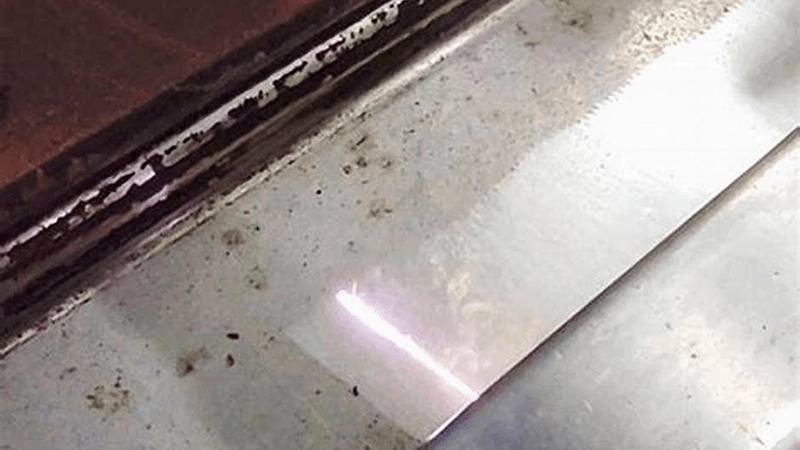
Are there any safety precautions to consider when operating a CW laser cleaning machine?
Like any industrial equipment, CW laser cleaning machines require proper safety measures to protect operators and bystanders. Understanding the safety precautions involved is key to preventing accidents and ensuring a safe working environment.
CW laser cleaning machines use high-powered lasers, which can pose safety risks if not handled properly. Operators should wear protective eyewear13, and proper ventilation should be ensured to prevent exposure to hazardous fumes.
Operating a CW laser cleaning machine requires specific safety precautions to prevent accidents and injuries. The high-powered laser used in these machines can be dangerous if proper safety protocols are not followed.
Protective Eyewear
One of the most important safety measures when operating a CW laser cleaning machine is wearing protective eyewear. The laser beam can cause severe eye damage, so operators must wear the appropriate goggles to block out harmful wavelengths.
| Safety Gear | Required Protection | Frequency | Importance |
|---|---|---|---|
| Eyewear | Block harmful wavelengths | Always during operation | Prevents eye damage |
| Gloves | Laser hazard protection | Always during operation | Protects from skin burns |
Ventilation and Fume Extraction
Laser cleaning generates fumes from the material being cleaned, especially when removing coatings or rust. Proper ventilation and fume extraction systems should be in place to prevent operators from inhaling hazardous particles.
| Safety Measure | Task Description | Frequency | Importance |
|---|---|---|---|
| Fume Extraction | Install systems to collect fumes | Always during operation | Prevents inhalation of toxic fumes |
| Ventilation | Ensure airflow to disperse heat | Always during operation | Prevents overheating and contamination |
Training and Certification
Ensuring that operators are properly trained to use the machine is essential for safety. Many companies require operators to complete certification programs to ensure they understand the risks and how to mitigate them while using laser cleaning machines.
| Training Program | Focus Area | Frequency | Importance |
|---|---|---|---|
| Certification | Laser operation, safety | Before use | Ensures safe operation |
| Safety Drills | Emergency response procedures | Annually | Prepares for accidents |
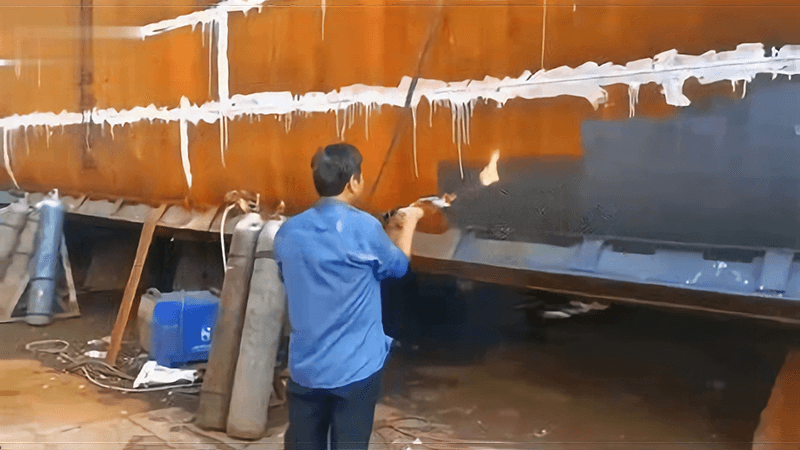
Conclusion
CW laser cleaning machines14 are an efficient and eco-friendly solution for industrial cleaning, offering numerous advantages over traditional methods. They are versatile, safe, and provide precise cleaning for a wide range of materials. With proper maintenance and safety precautions, these machines can significantly improve your cleaning processes and help your business achieve higher efficiency and quality.
If you are looking for laser cleaning machines, do not hesitate to contact us 15 to get your best solutions.
-
Discover the science and application of continuous wave laser technology ↩
-
Understand the process and effectiveness of laser ablation for cleaning ↩
-
Learn how fiber lasers enhance the precision and efficiency of industrial cleaning ↩
-
Explore how laser cleaning enhances efficiency in the automotive industry ↩
-
Learn about the critical role of surface cleanliness in aerospace safety and performance ↩
-
Discover the advantages of CW laser cleaning over traditional chemical methods ↩
-
Learn how CW laser cleaning reduces environmental impact and waste ↩
-
Understand how CW laser cleaning machines work on delicate surfaces without damage ↩
-
Learn how CW laser cleaning is used for cleaning sensitive electronics like circuit boards ↩
-
Discover how laser cleaning enhances maintenance of delicate turbine blades in aerospace ↩
-
Learn how to maintain the optical components in laser cleaning machines for optimal performance ↩
-
Understand the importance of cooling system maintenance in laser cleaning machines ↩
-
Learn about the necessary safety precautions for using laser cleaning machines safely ↩
-
Kirin Laser has different kinds of laser cleaning machine for your choises. ↩
-
Contat Kirin Laser to get your best solutions for laser cleaning machines. ↩


